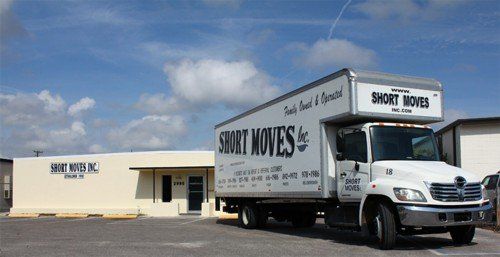Packing and Moving Tips
Moving is stressful, but as long as you do a little bit each day you will keep the stress level down.
Plan ahead by starting your packing at least a month or two ahead.
Get good packing material. Some boxes you can buy are weak. If you buy boxes that tear at the seams, get some extra tape to tape the corners and edges of your boxes. Plan to use about 1 roll of tape to fully seal about 10 boxes.
You can find the best price on packing tape from a local "moving supplies company"
Newsprint type packing paper is the best to use for fragile items like dishes and glasses. We have some tips below on using paper:
• Delicate items should be placed closer to the top of the box
• Line the bottom of boxes with several layers of padding paper
Dresser drawers usually do not need to be emptied. If you have solid wood furniture just check for anything fragile or liquid. The dresser / chests that we would suggest you empty are the antique pieces where the glue joints have dried out, furniture with thin legs and particle board furniture. Of course, also empty china chests, desks, wood and lateral file cabinets, wall units, any hutch tops and small tables with storage compartments.
On local moves, Short Moves doesn't feel it is necessary to encourage the purchase of boxes for lamps, beds, pictures, mirrors and TVs. We can protect those items with our moving pads. Boxes are a big money maker for a lot of moving companies. If you use our services, we will supply free use of wardrobe boxes on your moving day for hanging clothes. We will do all we can to help you avoid any unnecessary charges for your move.
Suggestions to help keep your costs down are:
• Move small easy items yourself (boxes, lamps, pictures, plants, bikes, garden tools, etc.)
• Complete all breakdown and setup necessary
• Breakdown beds
• Remove attached mirrors
• Remove lamp shades
• Complete all breakdown and setup necessary
• Breakdown beds
• Remove attached mirrors
• Remove lamp shades
• Unplug electrical items
• Unhook washer / dryer / water lines to refrigerator
• Remove adjustable shelving in china cabinets
• Keep boxes stackable
• Do not over pack
• Unhook washer / dryer / water lines to refrigerator
• Remove adjustable shelving in china cabinets
• Keep boxes stackable
• Do not over pack
Anything that you can do to prepare an item where it is ready to go out of the door the faster we can load, unload the cheaper your bill!

Request an estimate from us to learn more about our moving services.
